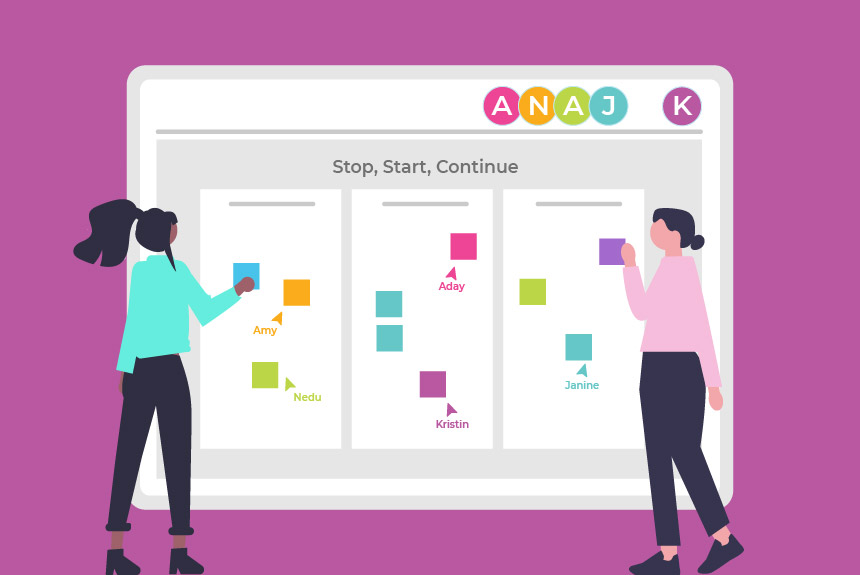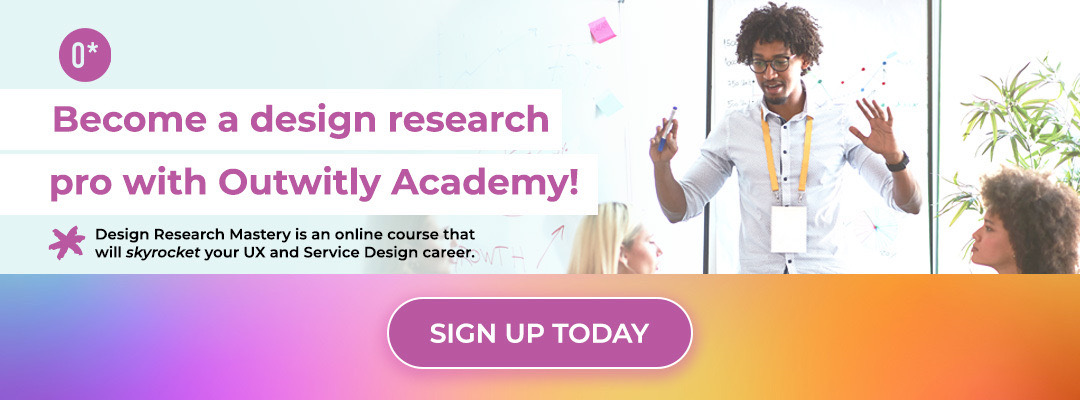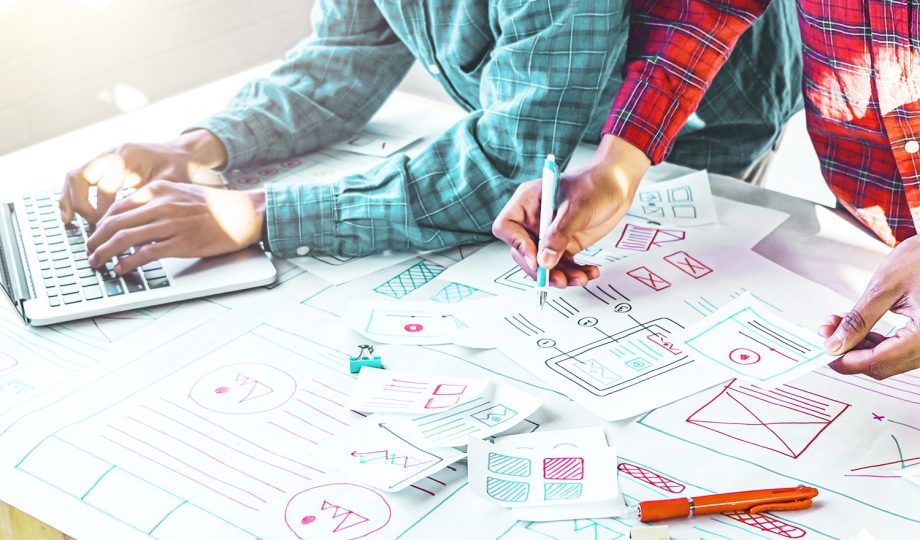
In the fast-paced world of UX and service design, adaptability and continuous improvement are the keys to success. For designers and researchers alike, every project offers a chance to take a step back and see what parts of your workflow could be improved.
In our previous blogs, we introduced Sprint Retrospectives and Agile Facilitation. We discussed the structure of a retrospective, how to prep your team for a retrospective, and our favourite sprint retrospective methods. Whether you’re a product or project manager, a dedicated designer, or any other practitioner on the frontlines of user experience – creating structured opportunities for team reflection and post-project assessment is essential.
In today’s blog, we will do a deep dive into one retrospective method in particular: ‘Stop, Start, Continue.’ We will discuss how this method can be used to improve workflows during a multi-phase project iteratively. If you’ve ever worked on a multi-phase project, you know how complex they can quickly become. Due to their lengthy nature, things oftentimes stray from your initial research planning! Unexpected scheduling hurdles, new constraints, added stakeholders – all of these factors may impact the project delivery. As the project evolves and you uncover more with your research, the scope of your work may change as well.
In these scenarios, it’s critical to continually evaluate your workflows and adapt them to fit the changing needs of the project. Let’s discover how to harness the power of the ‘Stop, Start, Continue’ retrospective method to enhance workflow throughout a multi-phase project continuously.
View this post on Instagram
What is the Start, Stop, Continue Method?
The ‘Stop, Start, Continue’ method is a simple and effective approach to a design retrospective. True to its name, it involves reflecting on what aspects of a project or process should be stopped, started, or continued. Here’s how it works:
Stop: Identify elements or practices that are not working well or causing issues. These could be processes, behaviours, or any other aspects that are hindering progress or effectiveness. Stopping these activities or approaches can help eliminate these problems from happening in the future. It’s always good to reflect and learn from your failures!
Start: Identify new ideas, processes, or behaviours that could improve the project or workflow. This involves suggesting changes that are not currently in place but could positively impact the outcome or efficiency of the project.
Continue: Recognize and acknowledge aspects that are working well and contributing positively to the project. Continuing these practices ensures that successful elements are sustained and built upon.
By systematically considering what needs to be stopped, started, and continued, your team can gain valuable insights for improvement and optimization. This method encourages constructive feedback, helping you focus on actionable steps for enhancing your work, and forges more effective UX and service design teams.

Themes to Consider When Doing a ‘Start, Stop, Continue’ Retrospective
If you are working on a multi-phase project, the first phase is likely where you’ll find yourself noticing the most places for improvement. It may be your first time collaborating with certain people, your first time interacting with specific stakeholders, or your first time using specific software. As with any first attempt, it’s natural to have areas of uncertainty or inefficiency.
Before jumping into your next phase of work, this is the perfect opportunity to use the ‘Start, Stop, Continue’ method. Here are some common themes we have noticed from past projects that work well to jumpstart the retrospective discussion:
Communication
In every project, you’ll find yourself communicating with new people for the first time, whether it’s new stakeholders, new team members, or new subject matter experts. As we know, communication is the backbone of successful project management. It enhances collaboration, minimizes risks, and ensures that the project team is working cohesively toward common objectives.
Note: Effective communication plays a pivotal role in shaping risk assessments, a crucial component for ensuring long-term project success! Explore the significance of risk mitigation in Outwitly Academy’s Design Research Mastery course, where five lessons are dedicated to enhancing project outcomes through strategic communication. Check it out here:
Try evaluating your communication methods and see what practices should start, stop, or continue. Here are some examples from our Outwitly team:
Regular Check-ins: At Outwitly, we love quick, regular check-ins. Short meetings a few times throughout the week greatly improve our collaboration, allowing us to give updates, exchange feedback, and quickly delegate work. Consider re-evaluating your own team check-ins for effectiveness. Are you meeting frequently enough? Too frequently? Does the length of your check-ins need to be adjusted?
Offline Delegation: As a remote team with designers working across different time zones, asynchronous collaboration is a necessity for our team. We have found different ways to communicate offline, for example, by making the most of comments and tagging functionality in various software tools. This allows us to collaborate effectively and leave feedback for colleagues who weren’t online at the same time. If you also have members of your team who work asynchronously, consider exploring new ways to enhance your offline collaboration.
Software
Software plays a significant role in influencing project success by providing the necessary tools and capabilities to streamline processes, enhance collaboration, and improve overall project management efficiency. Appropriate or inappropriate software tools for a project can significantly impact its success. Here are some lessons Outwitly has learned from applying the ‘Start, Stop, Continue’ method to the software we use.
Tool Proliferation: Oftentimes, we designers and researchers can find our design work scattered across multiple software platforms, including Adobe, Figma, Miro, and Google Docs. However, this can cause a fragmented workflow, creating unnecessary complexity.
If you recognize this as an area to improve within your team, consider seeking out a more consolidated approach to your tools. For example, after recognizing the importance of centralization on a past project, our team at Outwitly has consolidated design work in Figma as much as possible, improving collaboration and streamlining feedback processes.
Workflow
Effective workflows are another cornerstone of project success and great UX and Service Design teams. They bring order to complexity, facilitate collaboration, and ensure that tasks are completed with efficiency and quality. A thoughtful and adaptable workflow is essential for navigating the challenges inherent in project management and achieving successful outcomes. Here are some discoveries Outwitly has made about our past project workflows using the ‘Start, Stop, Continue,’ method.
Versioning Overload: If you are working on a complex project with a long timeline, you may find your team running into a versioning overload issue. In past projects, the Outwitly team has found ourselves with numerous versions of deliverables, from versions for internal note-taking to versions for stakeholder review, to versions for workshop participants, and so on. Consider evaluating how frequently your team is creating versions of deliverables. Is there a purpose for each different version?
If you recognize a need to streamline this process, consider exploring more efficient ways to share deliverables without generating multiple new versions. For example, instead of creating a new version of a deliverable for each stakeholder, block out or hide specific sections of the document to share with stakeholders as needed. This can significantly reduce redundancy and confusion.
Excessive Reviewing: Within a multi-phase project, you may find yourself completing stringent reviews for every phase of the project deliverables. However, review rounds can consume a ton of time and resources.
In previous projects, the Outwitly design team found that reviews were often focused on details related to consistency, such as capitalization of copy, icon placement, and other minor aspects that were not clearly defined at the project’s outset.
If you find your team dealing with similar issues when it comes to reviewing for consistency, consider establishing early rules for copywriting before any deliverables are created. These guidelines can specify rules for capitalization, appropriate abbreviations, and the narrative approach to be taken. This will help ensure all designers are aligned in their copywriting from the beginning, even in rough drafts and note-taking, saving time and energy during review.
If you’re a Design Researcher, Service Designer, or UX professional looking for ways to level up, let our newsletter, The Weekly Wit, help you!
Get educational content, tips and tricks, and industry info sent straight to your inbox.
Implementing Your Retrospective Findings
Once your team has discussed key themes using the ‘Start, Stop, Continue’ method, it’s time to actually implement your findings! This involves turning insights and lessons learned into actionable steps for improvement. Here is a step-by-step guide on how to implement findings made during a design retrospective:
- Document Key Findings: Record the key insights and findings from the retrospective session. This documentation serves as a reference for the team and helps ensure that the identified issues and opportunities are not overlooked. We suggest using a collaborative tool such as Miro or Figjam to facilitate and keep a record of the retrospective.
- Prioritize Findings: Prioritize the identified findings based on their impact on the project and the ease of implementation. Focus on addressing the most critical issues first to maximize the impact of the improvements.
- Define Actionable Steps: For each finding, define clear and actionable steps that can be taken to address or improve the situation. Be specific about what needs to change, who is responsible, and the expected outcomes. You can use the words ‘stop,’ ‘start,’ and ‘continue’ to help define these actions. Here are some examples from our themes discussed above:
-
- Stop creating numerous versions of deliverables to eliminate confusion and complexity. Instead, create one master version and specific sections when presenting to specific stakeholders.
- Start working in the same software to streamline the team’s workflow. Complete deliverables from start to finish in the same place to eliminate duplication of work.
- Continue using quick checkpoints and offline delegation to collaborate seamlessly throughout our work.
-
- Assign Action Items: Assign responsibilities for implementing the identified actions. Clearly communicate roles and responsibilities to team members, ensuring that everyone is aware of their part in the improvement process.
- Monitor Progress: Regularly monitor the progress of the implementation efforts. Track how well the team is adhering to the defined action items and whether the desired improvements are being realized. Continuously gather feedback from team members.
- Reflect in Future Retrospectives: Incorporate reflections on the effectiveness of the implemented changes in future retrospectives. Assess whether the improvements had the desired impact and identify additional areas for refinement.
In the dynamic world of UX and service design, adaptability and continuous improvement are keys to successful projects. You now possess all the tools and know-how you need to utilize the ‘Stop, Start, Continue’ method to craft an effective retrospective and help your team become more powerful and successful!





